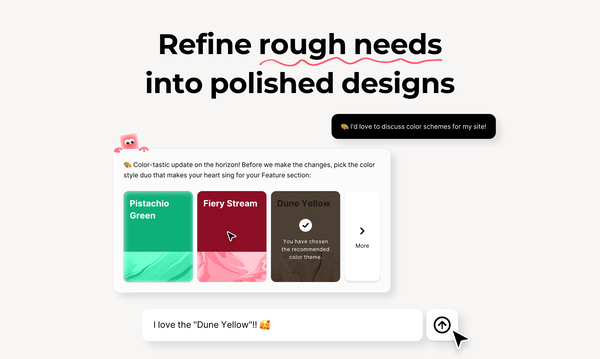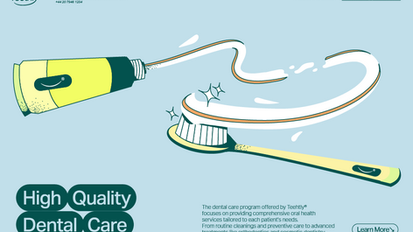Web Hosting Design FAQ
How to Master Web Hosting Design
Web Hosting Design
In today’s digital age, having a strong online presence is essential for businesses and individuals alike. Whether you are looking to create a personal blog, launch an e-commerce site, or establish an online portfolio, finding the right web hosting provider is crucial for ensuring your website is secure, reliable, and easily accessible to users. With so many web hosting options available on the market, it can be overwhelming to choose the best provider for your needs. In this article, we will compare various web hosting options and help you make an informed decision.

How to Web Hosting Design
Web Hosting Design
1. Minimalistic Design
One popular trend in web design is minimalism. A minimalistic design relies on clean and simple layouts, with a focus on white space and essential elements. This design approach ensures that the user’s attention is directed towards the most important information on the website. Minimalistic designs are visually appealing and easy to navigate, resulting in a better user experience.
2. Bold Typography
Typography plays a significant role in web design and can greatly impact the overall look and feel of a website. Bold and eye-catching fonts can make a strong statement and help emphasize key messages. Experimenting with different font styles, sizes, and colors can add visual interest to your website and make it more engaging for visitors.
3. Interactive Elements
Adding interactive elements to your website can enhance user engagement and make the browsing experience more enjoyable. Incorporating features such as sliders, animations, hover effects, and interactive buttons can make your website more dynamic and visually appealing. Interactive elements can also help guide users through the website and draw their attention to specific content.
4. Parallax Scrolling
Parallax scrolling is a popular web design technique that creates a sense of depth and movement on a website. This effect is achieved by moving the background content at a different speed than the foreground content as the user scrolls down the page. Parallax scrolling can create a visually stunning and immersive experience for visitors, making your website more memorable and engaging.
5. Dark Mode
Dark mode has become a popular design trend in recent years, with many websites offering a dark color scheme as an alternative to the traditional light theme. Dark mode is not only visually appealing but also easier on the eyes, especially in low-light environments. Implementing a dark mode option on your website can cater to the preferences of different users and provide a more customizable experience.
6. Mobile Optimization
With the increasing use of smartphones and tablets, it is crucial to ensure that your website is optimized for mobile devices. Responsive web design allows your website to adapt to different screen sizes and resolutions, providing a seamless experience across all devices. Mobile optimization is essential for reaching a larger audience and improving user engagement on your website.
7. Custom Illustrations and Graphics
Incorporating custom illustrations and graphics can add a unique and personal touch to your website. Custom artwork can help reflect your brand’s personality and values, creating a memorable visual identity for visitors. Whether it’s hand-drawn illustrations, infographics, or animations, custom graphics can enhance the overall look and feel of your website and make it more visually appealing.
8. Video Backgrounds
Using video backgrounds on your website can make a powerful impact and capture the attention of visitors. Video backgrounds can help set the tone for your website, convey a message, and create a visually engaging experience. Whether it’s a short looped video or a full-screen background video, incorporating multimedia elements can make your website more dynamic and interactive.
9. Accessibility Features
Web accessibility is an important consideration in web design, ensuring that people with disabilities can access and use your website effectively. Integrating accessibility features such as alt text for images, keyboard navigation, and screen reader compatibility can make your website more inclusive and user-friendly. By making your website accessible to all users, you can reach a wider audience and improve the overall user experience.
10. Personalization
Personalizing the user experience can help create a more engaging and tailored experience for visitors. Implementing features such as personalized recommendations, dynamic content, and targeted messaging can make your website more relevant and appealing to individual users. By leveraging data and user preferences, you can create a more personalized and interactive experience that keeps visitors coming back for more.
1. Start with a unique concept
When developing a new recipe, it is important to start with a unique concept that sets your dish apart from others. Consider combining unexpected flavors, using new cooking techniques, or incorporating unusual ingredients to create a recipe that will pique your readers’ interest. You can draw inspiration from different cuisines, culinary trends, or seasonal ingredients to come up with a concept that is both original and appealing.
2. Experiment with different ingredients and flavors
Building recipes is all about experimentation and creativity. Don’t be afraid to try out new ingredients and flavor combinations to create exciting and delicious dishes. Consider incorporating fresh herbs, spices, citrus zest, or other aromatic ingredients to enhance the flavors of your recipe. Experimenting with different cooking techniques, such as grilling, roasting, or braising, can also add complexity and depth to your dishes.
3. Consider dietary restrictions and preferences
When building recipes for your website, it is important to consider the dietary restrictions and preferences of your audience. Make sure to provide options for different dietary needs, such as vegetarian, gluten-free, dairy-free, or vegan recipes. Including nutritional information, such as calorie count, macronutrients, and allergen information, can also make your recipes more accessible and appealing to a wider audience.
4. Include detailed instructions and tips
When writing out your recipes, be sure to provide detailed instructions that are easy to follow. Include step-by-step directions, cooking times, and temperatures, as well as helpful tips and tricks to ensure success in the kitchen. Consider including photos or videos to visually demonstrate each step of the cooking process, making it easier for your readers to replicate your recipes at home.
5. Test your recipes
Before publishing a new recipe on your website, be sure to test it multiple times to ensure that it is accurate and delicious. Invite friends or family members to sample your dishes and provide feedback on the taste, texture, and presentation. Adjust the seasoning, cooking times, or ingredient ratios as needed to perfect your recipe before sharing it with your audience.
6. Engage with your audience
Building recipes on your website is not just about creating delicious dishes – it is also about engaging with your audience and building a community around your food blog. Encourage your readers to leave comments, ask questions, and share their own experiences with your recipes. Consider hosting cooking demonstrations, virtual cooking classes, or recipe contests to interact with your audience and showcase your culinary skills.

Web Hosting Design Explained
Web Hosting Design
In today’s digital age, having a visually appealing and user-friendly website is crucial for the success of any business. A well-designed website can help attract new customers, build credibility, and increase conversion rates. However, designing a website is not as simple as it may seem. It requires a strategic and systematic approach to ensure that the final product meets the needs and expectations of both the business and its target audience. In this article, we will discuss the website design process in detail, outlining the key steps involved in creating a successful website.
Step 1: Define the Purpose and Goals
The first step in the website design process is to clearly define the purpose and goals of the website. This involves identifying the target audience, understanding their needs and preferences, and determining the desired outcomes for the website. For example, is the website meant to generate leads, drive sales, provide information, or showcase products and services? By having a clear understanding of the purpose and goals of the website, you can better tailor the design and content to meet these objectives.
Step 2: Conduct Research
Once the purpose and goals of the website have been defined, the next step is to conduct research. This involves analyzing the competition, researching industry trends, and gathering insights into the preferences and behaviors of the target audience. By conducting thorough research, you can gain a better understanding of what works and what doesn’t in your industry, helping you make informed design decisions.
Step 3: Create a Wireframe
After conducting research, the next step in the website design process is to create a wireframe. A wireframe is a visual representation of the layout and structure of the website, showing the placement of various elements such as navigation menus, headers, footers, and content sections. Creating a wireframe allows you to plan the overall design and functionality of the website before moving on to the visual design phase.
Step 4: Design the Visual Elements
Once the wireframe has been finalized, the next step is to design the visual elements of the website. This involves creating a visually appealing and consistent design that reflects the brand identity and resonates with the target audience. Elements such as color scheme, typography, imagery, and layout are carefully considered to create a cohesive and attractive design that conveys the desired message and engages users.
Step 5: Develop the Website
After the visual design has been approved, the next step is to develop the website. This involves coding the design into a functioning website using HTML, CSS, and other programming languages. During the development phase, the website is tested for functionality, responsiveness, and compatibility across different devices and browsers to ensure a seamless user experience.
Step 6: Test and Optimize
Once the website has been developed, it is essential to test and optimize its performance. This involves conducting usability tests to identify any usability issues, testing load times to ensure fast page speeds, and optimizing the website for search engines to improve visibility and accessibility. By testing and optimizing the website, you can ensure that it meets the needs and expectations of users, leading to better engagement and conversions.
Step 7: Launch and Monitor
The final step in the website design process is to launch the website and monitor its performance. This involves deploying the website to a live server, promoting it to the target audience, and tracking key metrics such as traffic, engagement, and conversions. By monitoring the performance of the website, you can identify areas for improvement and make informed decisions to optimize its effectiveness over time.


